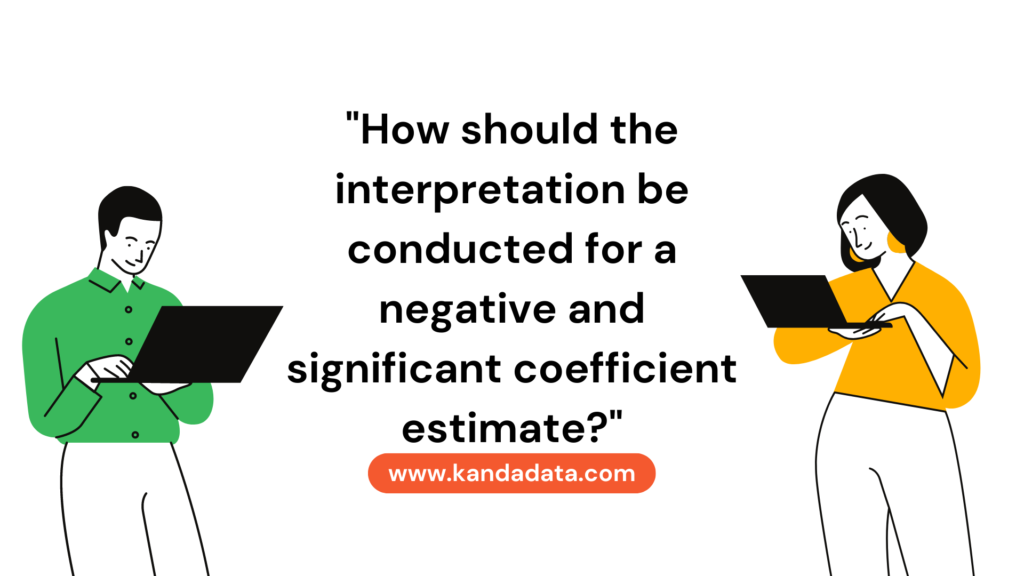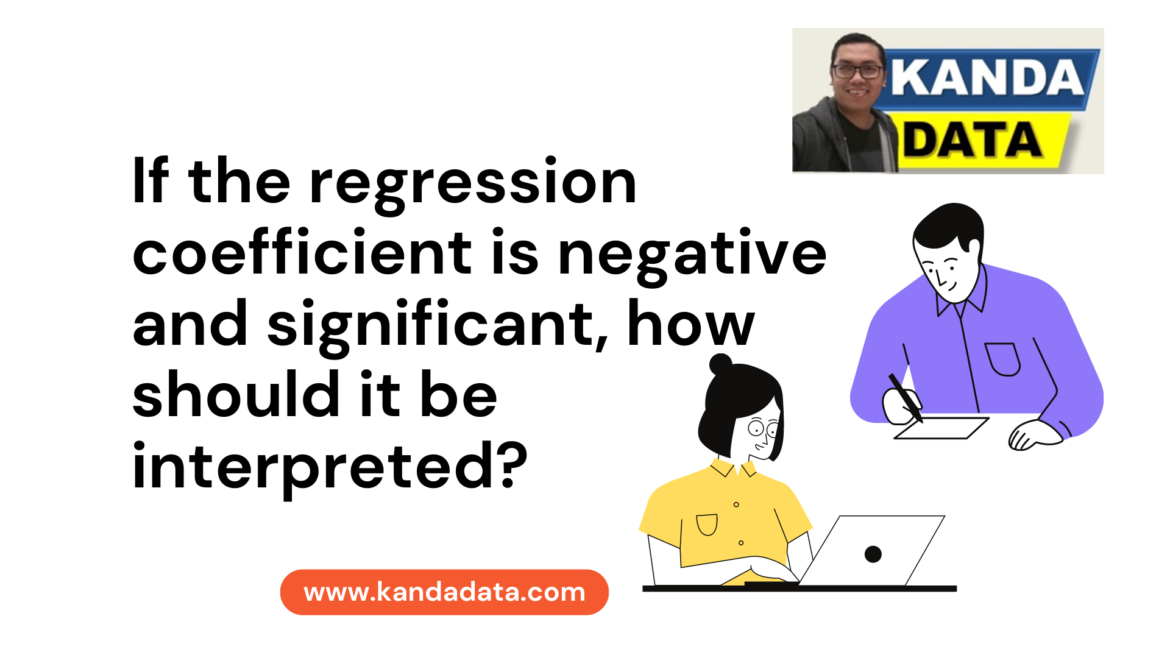Blog
If the regression coefficient is negative and significant, how should it be interpreted?
In some research findings, it is possible to observe negative and significant values for the estimated regression coefficient. Under such circumstances, how should this be interpreted? This is a question that often arises among researchers when they encounter results that indicate a negative coefficient estimate that is statistically significant.
As is generally known, the ordinary least squares (OLS) method is commonly used by researchers to examine the influence of independent variables on the dependent variable. In regression analysis, independent variables are often denoted as X, representing variables that exert an influence. On the other hand, the dependent variable is often denoted as Y, representing the variable that is influenced.
In line with the title chosen for this discussion, if the linear regression coefficient is negative and significant, how should it be interpreted? In the following paragraphs, we will discuss into the details of what should be done and how to interpret results with negative and significant estimation.
General form of the regression equation
In ordinary least squares (OLS) linear regression, there are two types: simple linear regression and multiple linear regression. Multiple linear regression is often preferred by researchers as it allows for the exploration of multiple independent variables. The general form of the OLS linear regression equation is as follows:
Y = bo + b1X1 + b2X2 + … + bnXn + e
Where:
bo = Intercept
b1, b2, …, bn = Regression coefficient estimates
X1, X2, …, Xn = Independent variables
Y = Dependent variable
e = Error term
Based on this equation, we can observe that the regression equation consists of an intercept and regression coefficient estimates for each independent variable. Additionally, we also consider the presence of an error term. The error term represents the influence of other independent variables on the dependent variable that are not included in the regression equation.

Negative and significant regression coefficient estimates
Based on the regression estimation results, one of the coefficient estimates is negative, as shown in the following estimation equation:
Y = 80 – 24X1 + 25X2
According to this estimation equation, the intercept value is 80. Furthermore, the regression coefficient estimate for variable X1 is 24, while for variable X2, it is 25. The estimation results indicate that the coefficient for variable X1 is negative, while the coefficient for variable X2 is positive.
Upon examining the p-values of the coefficient estimates for both independent variables, it is found that the p-value for X1 is 0.013, and for X2, it is 0.245. Based on these results, it can be concluded that the statistical hypothesis testing yields the rejection of the null hypothesis for variable X1 and the acceptance of the null hypothesis for variable X2.
Thus, it can be inferred that variable X1 has a significant partial effect on variable Y, while variable X2 does not have a significant partial effect on variable Y. The hypothesis testing criteria in this study use a significance level of 5%. Many have wondered why the coefficient estimate for X1 is negative, especially when the statistical test results indicate a significant effect.
Steps to take before proceeding with the interpretation of results
To answer the question, “How should the interpretation be conducted for a negative and significant coefficient estimate?” researchers need to consider several factors. The first step that researchers should take before proceeding with the interpretation of the analysis results is to ensure that the required assumptions for OLS linear regression have been met.

These assumptions include tests for residual normality, homoscedasticity, absence of multicollinearity, and the formation of a linear relationship between the independent and dependent variables as indicated by their scatter plot. Once all the assumptions have been met, the researcher needs to examine whether the negative coefficient estimate aligns with the existing theories and previous research findings.
In the example case, where X1 represents the selling price and Y represents the sales volume, if the position of X1 is negative, does it align with the theory?
Based on the simulation results, it can be interpreted that an increase in X1 leads to a decrease in Y, and vice versa. Applying this to the example case, it can be interpreted that an increase in selling price leads to a decrease in sales volume, and conversely, a decrease in selling price leads to an increase in sales volume.
Researchers need to verify whether this aligns with the theory. In this case, it does align with the theory. The majority of previous research findings also indicated a negative estimated effect of price on sales.
Conclusion
Based on the previous paragraphs, it can be concluded that regression coefficient estimates do not necessarily have to be positive but can also be negative. A negative coefficient indicates an opposite direction of influence that can be interpreted as having a contrasting impact.
Before conducting the interpretation, researchers need to ensure that the direction of influence aligns with existing theories and empirical findings from previous research. Furthermore, researchers need to check whether the assumptions have been met.
Additionally, the sampling technique and data collection methods should also adhere to scientific standards. This concludes the article for now. Hopefully, it has provided useful insights and new knowledge for everyone. Stay tuned for the next article from Kanda Data. Thank you.
